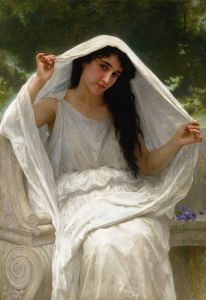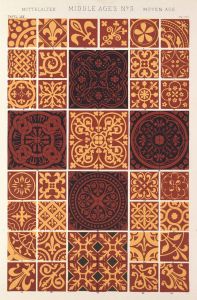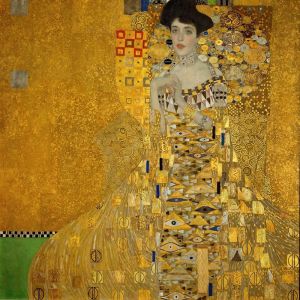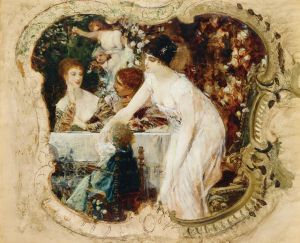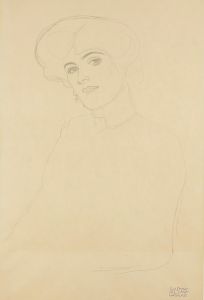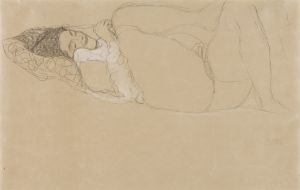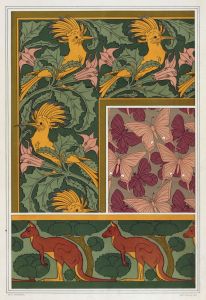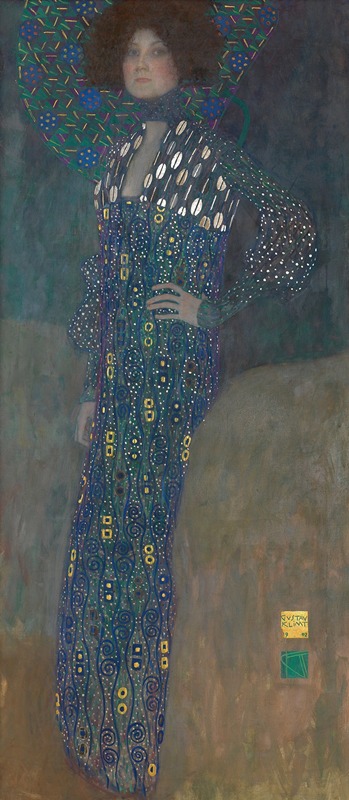
Bildnis Emilie Flöge
A hand-painted replica of Gustav Klimt’s masterpiece Bildnis Emilie Flöge, meticulously crafted by professional artists to capture the true essence of the original. Each piece is created with museum-quality canvas and rare mineral pigments, carefully painted by experienced artists with delicate brushstrokes and rich, layered colors to perfectly recreate the texture of the original artwork. Unlike machine-printed reproductions, this hand-painted version brings the painting to life, infused with the artist’s emotions and skill in every stroke. Whether for personal collection or home decoration, it instantly elevates the artistic atmosphere of any space.
Bildnis Emilie Flöge (Portrait of Emilie Flöge) is an oil painting created by Austrian symbolist painter Gustav Klimt in 1902. The artwork is a portrait of Emilie Flöge, a prominent Viennese fashion designer and Klimt's lifelong companion. Flöge was not only a close personal friend of Klimt but also a significant figure in the world of fashion, known for her innovative designs and her association with the Wiener Werkstätte, a group dedicated to modern design and craftsmanship.
The painting depicts Emilie Flöge in a full-length pose, dressed in an elaborate gown that reflects the Art Nouveau style and her own avant-garde approach to fashion. The gown is richly patterned, showcasing Klimt's signature decorative style, which often incorporated intricate motifs and a sense of opulence. The background of the painting is relatively simple, allowing the focus to remain on Flöge and her striking attire. This work exemplifies Klimt's ability to merge portraiture with elements of design, creating a harmonious balance between the subject and the decorative elements.
Klimt and Flöge shared a deep personal and professional relationship, though the exact nature of their bond remains a subject of historical interest. Flöge was a muse for Klimt, and she appeared in several of his works, either as a direct subject or as an inspiration for his allegorical and symbolic paintings. "Bildnis Emilie Flöge" is one of the few formal portraits Klimt painted of her, capturing her individuality and her role as a modern, independent woman of the early 20th century.
The painting is notable for its departure from traditional portraiture of the time. Instead of adhering to strict realism, Klimt infused the work with his characteristic decorative style, blending elements of symbolism and modernism. This approach aligns with the broader artistic movements of the Vienna Secession, of which Klimt was a leading figure. The Secessionists sought to break away from academic art and embrace new forms of expression, emphasizing the unity of art and design.
Today, "Bildnis Emilie Flöge" is considered an important example of Klimt's portraiture and his collaboration with Flöge. The painting is housed in the Wien Museum in Vienna, Austria, where it remains a testament to the artistic and cultural innovations of early 20th-century Vienna.





